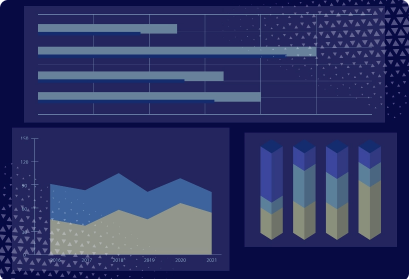The Future Of Data Centers
The last decade saw the emergence of data as the most important type of intellectual property in the world. The way that we handle data changes all the time as businesses are interested in the more efficient handling of valuable information. Therefore, the way that data centers operate changes constantly as well. In this blog, we will look into current, upcoming, and distant-future data center trends. These include trends in cabling, energy efficiency, location, and the structure of the data hub. We will investigate how new technologies and the growing demand for data influence the data centers of the future.
Trends That Are Just Around The Corner
Data centers of the 2020s will likely rely more on open source technologies and artificial intelligence. AI will be especially useful when it comes to self-healing and self-programming properties. The automatization of the data centers will increase their reliability. Though machine learning will optimize the adjustments made in data centers in real-time, data center managers will still be needed to evaluate the results. However, it is clear that data center managers of the future need advanced skills in AI.
Data Center Cabling: What's Next?
Cabling systems used in data centers are also expected to change quite drastically. New technologies, such as 5G, artificial intelligence, and edge computing, require data centers to invest in flexible cabling systems. Meanwhile, bandwidth demands continue to grow because of big data, the overabundance of the new services, and the increasing quality of audio and video. By 2025, there will be 175 zettabytes of virtual data in the world, which is a major challenge.
New solutions for data centers must be scalable because new data centers face the need to add capacity all the time without reinstalling the cable system from scratch. One of the most drastic challenges for data centers is managing a large amount of fiber. For example, outdated ''fridges'' located in the entrance room of the data center containing enormous amounts of fiber are now being replaced with efficient fiber management systems.
Making cables handle the increasing requirements for bandwidth is yet another challenge for the future. While fiber optic cables can mostly survive the increase in bandwidth, contemporary twisted-pair copper cabling usually has a limit of 10GB/s. Luckily, the solution to the issue is somewhere around the corner. The new generation 8 copper cabling can have a 2GHz specification, which is four times bigger than today's 500MHz bandwidth standard.
As for fiber optic cables, the 400G technology will likely become a mainstream way of coping with growing bandwidth demands. Hyperscale data centers will be the first to lead this trend. However, the technology will require single-mode fibers for long distances, which is more expensive than using multimode transceivers. Hyperscale hubs will invest in more sufficient fiber optic systems to decrease the probability of errors.
Future Trends For Energy Efficiency
Aside from the short-time prognoses, the experts speculate on the future of the data centers for decades to come. For one, data centers are expected to improve their energy efficiency by implementing AI. Someday, they will be able to recycle residual heat and give it back to the community. While big tech use of renewable energy has already been an ongoing trend, data centers may take it further by directly collaborating with renewable energy farms. Coordination with the community and smaller businesses is the desired future for data centers, with sustainability becoming more crucial.
Where Will the Data Centers of the Future Be Located?
Data centers are currently dependent on fiber networks to determine their location. This is completely understandable, as FO cables currently connect data all over the world. However, the presence of a fiber optic system will likely not be a priority forever. Tech companies are likely to start prioritizing efficient climate conditions over the presence of the fiber-optic network. Right now, tech giants like Facebook and Amazon are looking into the Nordic region at the plausible area to build their next data centers. Northern Europe gives access to clean and non-expensive energy sources, as well as a cool climate that provides the facility with natural cooling.
Alternative locations, like oceans, are now being used for data centers as well. Microsoft has been investing in the undersea data centers for the last couple of years. Wikileaks is rumored to locate its data centers under the ocean after Amazon AWS data centers stopped providing their services to the company. In the future, the trends in the location of data centers may continue to transform. For instance, compact offshore data centers may take the lead in the future because they can add capacity quite fast.
Storage and Structure Changes To Look Forward To
In the future, both hyper-scale and micro data centers will lead the way for different reasons. The former relies on the economy of scale, while the latter monetize their portability quite successfully. In the long-term perspective, we might see no data centers at all as they could be replaced with P2P direct networks. Storage would also improve dramatically. For instance, technologies like liquid storage can reduce costs while improving the capacity of the data centers. The room for innovation is vast, so some of the trends that will lead the way in a short time have not even been introduced yet. One thing is clear: data center computing is an ever-changing dynamic industry that is always up for a challenge. It will never cease to amaze us with creativity, and we are here to see it unravel.


















